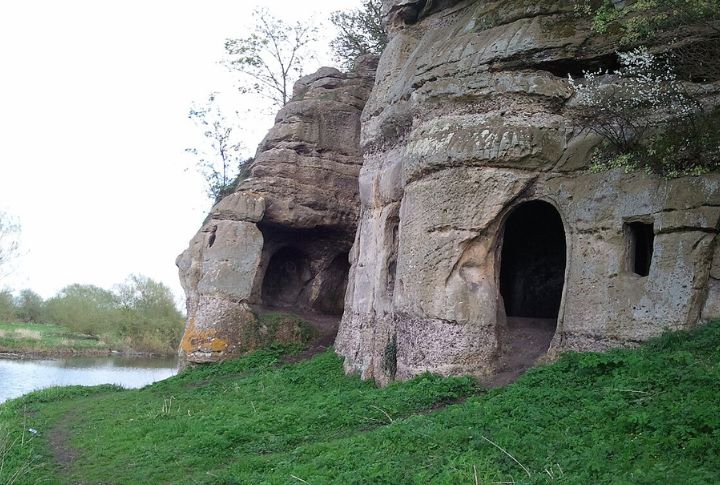
The Anchor Church Caves in Derbyshire, England, offer a glimpse into the past. Located along the River Trent, these caves are believed to have been the refuge of King Eardwulf. This site not only reflects the turbulent times of Anglo-Saxon England but also shows how history and nature intertwine. So, here are 20 key details about this age-old site.
Eardwulf’s Exile
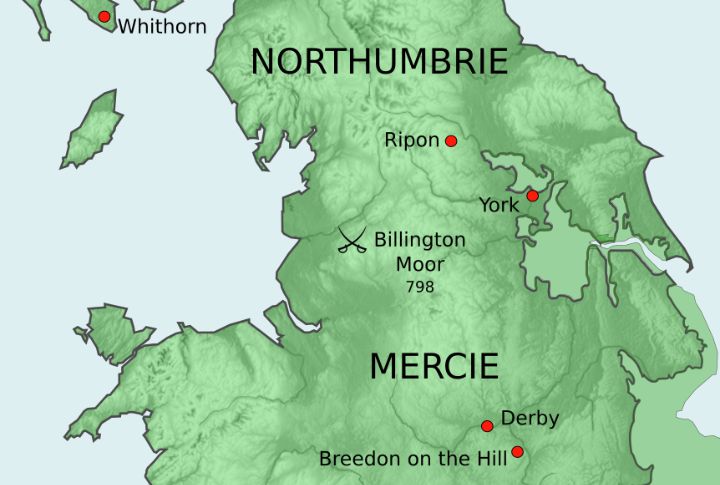
Overthrown in 806 CE, King Eardwulf fled Northumbria to the caves of Mercia, swapping royal halls for sandstone walls. Stripped of power, he turned to a life of solitude and prayer, beginning a journey that would see him remembered as Saint Hardulph, a symbol of resilience.
Saint Hardulph
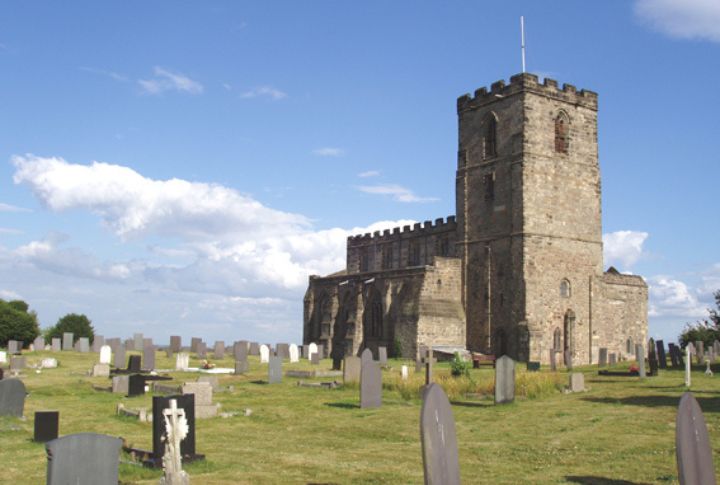
After gaining sainthood, Eardwulf became venerated as Saint Hardulph, remembered for his devotion and life of solitude. The caves along the River Trent, once his refuge, became sacred symbols of transformation, and his name lives on at Breedon on the Hill Church.
The Name Anchor Church

“Anchor Church” comes from the term “anchorite,” used to describe religious hermits who chose to live in seclusion to deepen their faith. This connection reflects the cave’s historical use as a spiritual retreat, which includes its role as a refuge for exiled King Eardwulf, later known as Saint Hardulph.
Natural Formation

Shaped by the slow, relentless flow of the River Trent, Anchor Church’s caves emerged from Keuper sandstone over millennia. Nature’s handiwork provided ready-made shelters that humans later enhanced, blending the raw beauty of the cliffs with purposeful design to create a sanctuary.
Architectural Insights
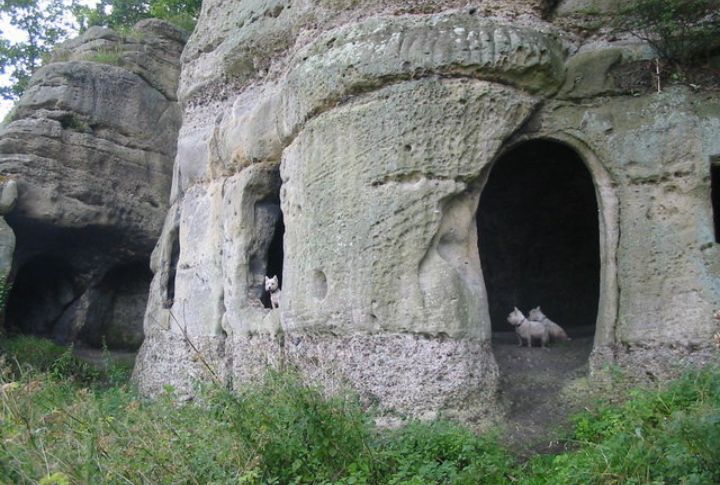
The caves at Anchor Church were modified into a structured dwelling during the Anglo-Saxon period. Archaeologists identified three distinct rooms, including a small chapel with an east-facing orientation. Plus, the modifications, such as carved doorways, demonstrate early medieval construction techniques.
Historical Documentation

The earliest written reference to Anchor Church dates back to 1658 in Repton church records, which noted its use as a cave dwelling. Later, a 1715 account by William Woolley described it as “a large cave dug out of a rock in the form of a chapel,” further highlighting its historical and spiritual significance.
Eardwulf’s Efforts
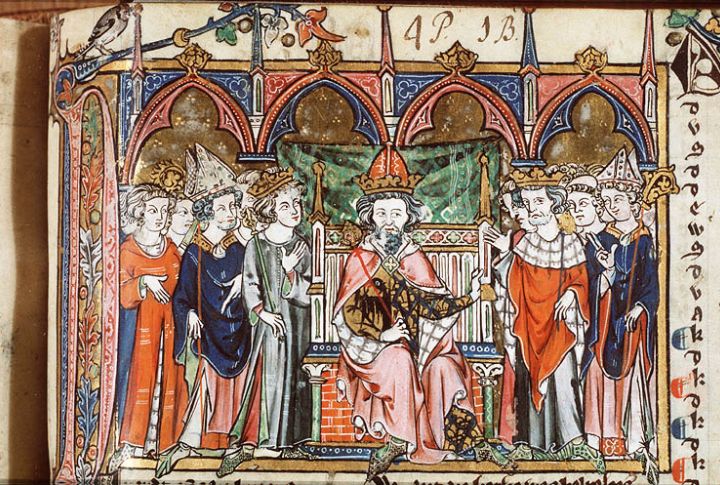
During his exile, Eardwulf of Northumbria sought support from influential figures to reclaim his throne. In 808, he visited the courts of Charlemagne and Pope Leo III, both of whom sympathized with his plight. Their backing facilitated his restoration to power in 809.
18th-Century Transformations
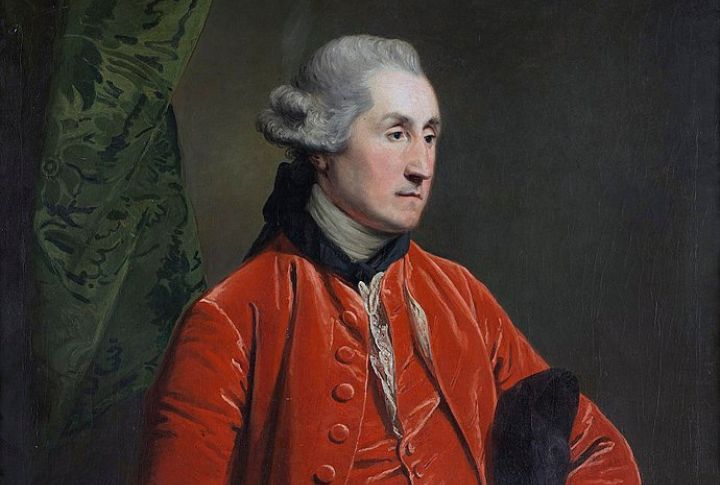
In the 18th century, Sir Robert Burdett, an English aristocrat, reimagined Anchor Church as a social retreat. He enlarged the cave entrances, added brickwork, and fitted windows. This way, he converted the ancient site into a unique venue for hosting dinners and gatherings focused on Georgian-era leisure.
Artistic Depictions
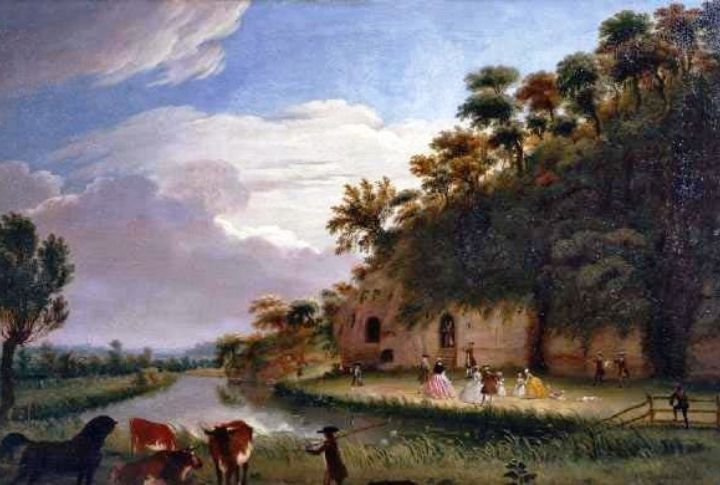
Anchor Church has been featured in historical artwork, most notably a painting by Thomas Smith of Derby in 1745. It is a depiction that presents the site’s modified entrances and scenic surroundings. It also offers a valuable glimpse into how the caves looked during their 18th-century transformation into a social venue.
A Place Of Worship

Anchor Church served as more than a dwelling; it housed a chapel believed to have been used for early Christian worship. The east-facing orientation of the chapel aligns with traditional practices of the time, and its carved spaces suggest it was specifically designed for religious gatherings and solitary prayer.
Natural Habitat
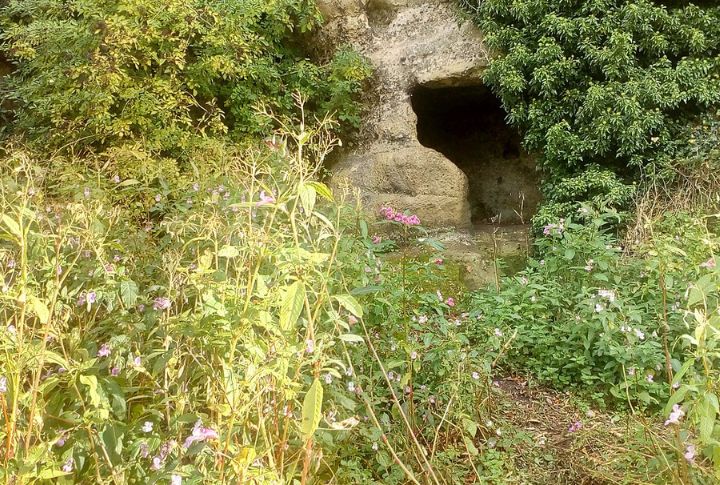
The area surrounding Anchor Church is a designated Local Wildlife Site, rich in biodiversity. It is home to rare plants like wall pennywort and shining pondweed, which thrives in the microclimate of the River Trent’s backwaters. This natural setting adds ecological value to the historical significance of the caves.
Tourism Appeal
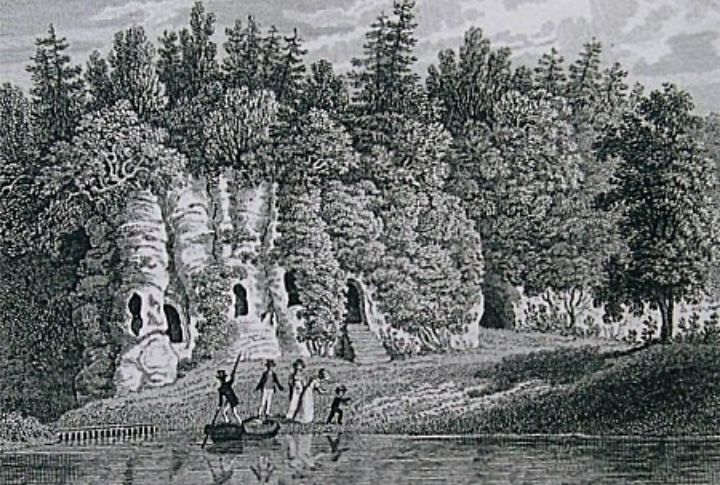
For those drawn to history and adventure, Anchor Church offers a unique experience. Accessible through trails near Ingleby, the caves invite exploration of their ancient interiors. Moreover, its proximity to the River Trent provides serene views, further enhancing its appeal to history and nature enthusiasts.
Cultural Significance
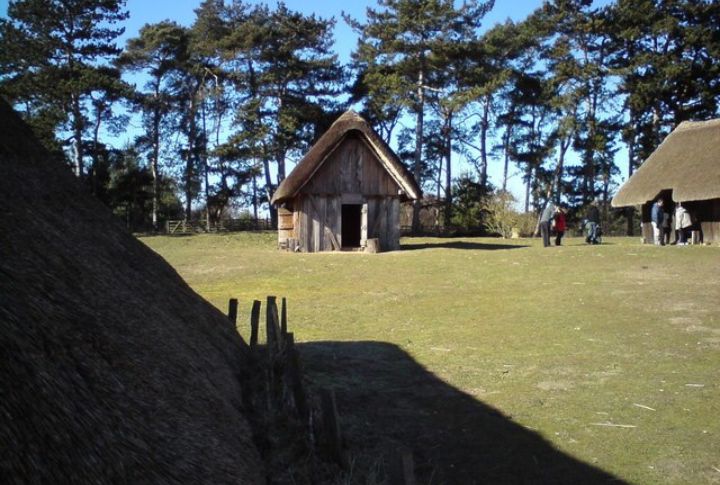
Anchor Church is deeply tied to early Christian practices. The chapel within the caves, aligned to the east, reflects Anglo-Saxon religious traditions of orienting worship spaces toward the sunrise. It is also believed that the site likely hosted prayers conducted by Eardwulf and his followers during his time as a hermit.
Preservation Efforts
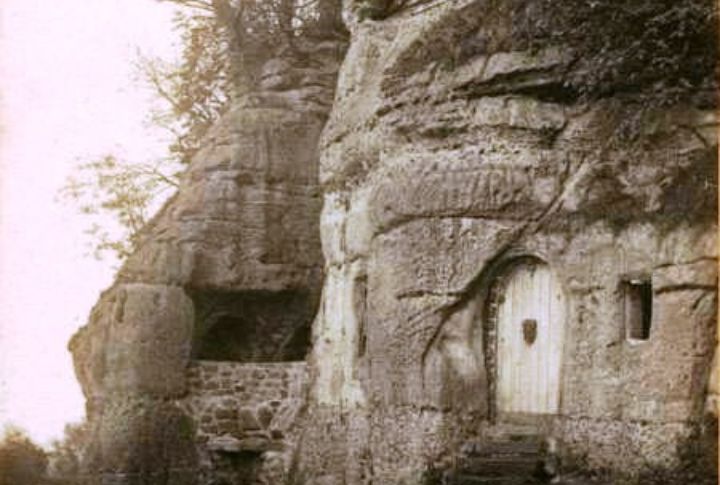
As a Grade II listed site, it benefits from legal protections aimed at safeguarding its historical features. Conservation projects prioritize preventing erosion of the sandstone and maintaining structural stability. Efforts also ensure the preservation of 18th-century modifications and keep the site accessible.
Local Legends

One verified tale links Anchor Church to Saint Hardulph, who lived there during his exile in the 9th century. Another documented account suggests that medieval anchorites, known for their solitary religious devotion, also used the caves. These historical connections give the site its spiritual significance.
Educational Resource
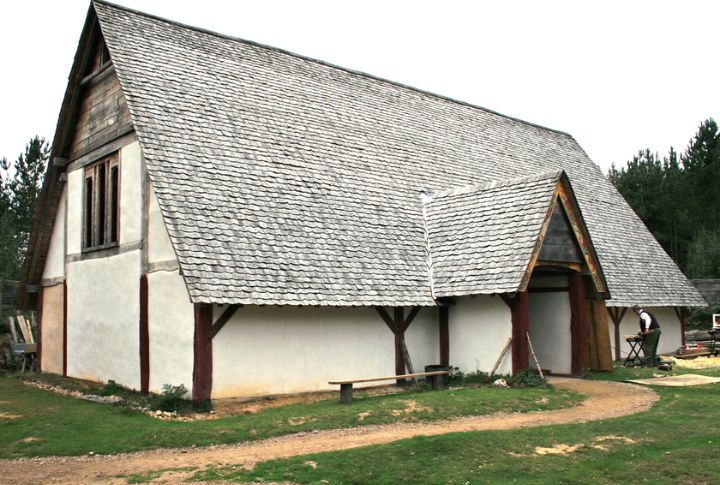
Researchers regard the site as an example of Anglo-Saxon domestic and religious architecture. The site offers direct evidence of how natural formations were adapted for living. Hence, its preservation allows the study of early medieval construction techniques and the cultural practices of that period.
Nearby Sites
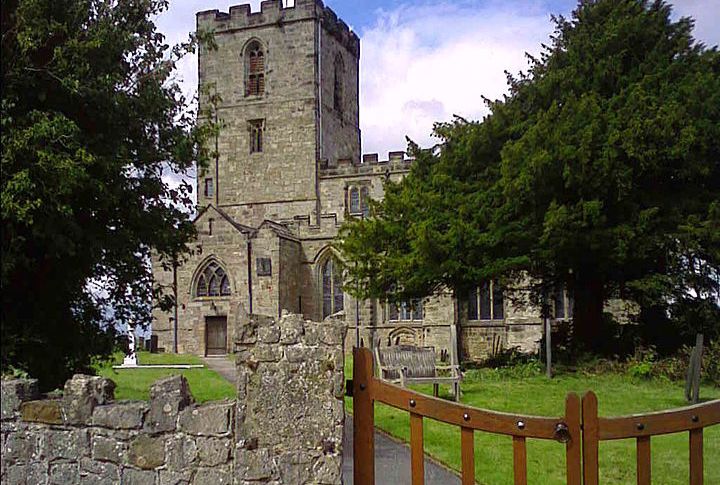
Close to Anchor Church, Breedon on the Hill Church is a key historical site, notable for its Anglo-Saxon carvings and connection to Saint Hardulph. The Repton area, also nearby, features the burial site of King Æthelbald of Mercia and other early medieval relics.
Community Involvement
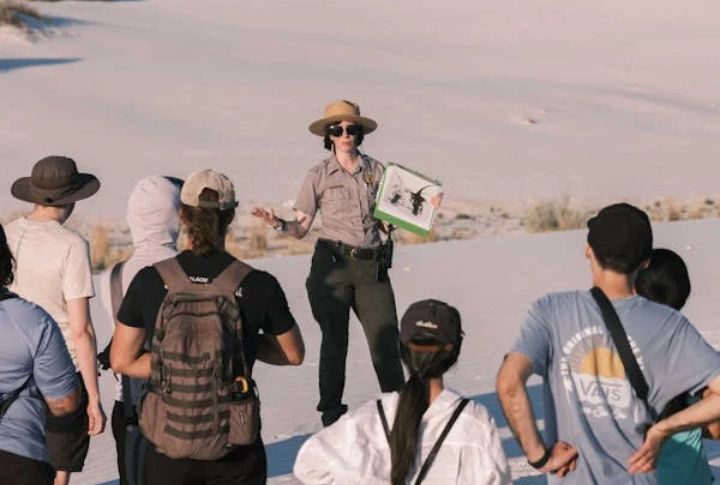
Local organizations and history groups actively work to promote Anchor Church. Guided tours, educational programs, and collaborative research projects help raise awareness of its significance. These efforts ensure that the caves continue to be a focal point for community engagement and learning.
Modern Archaeological Work
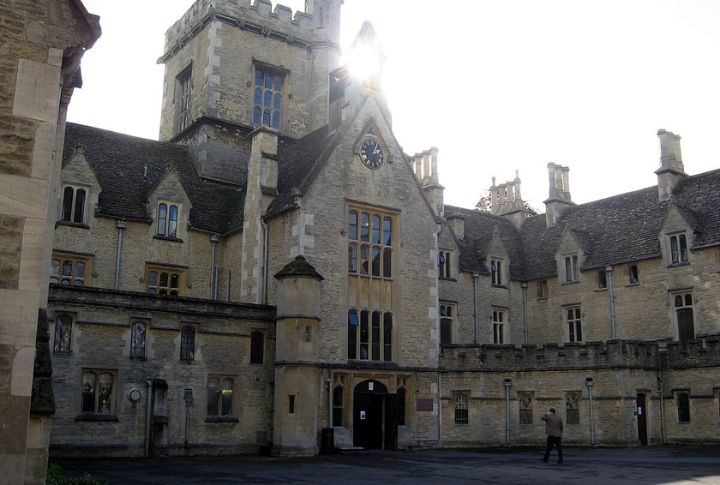
Recent studies led by archaeologist Edmund Simons and his team from the Royal Agricultural University have brought new insights into Anchor Church. Using 3D mapping technology, researchers have documented the cave’s structure in detail, which describes it as one of the oldest domestic structures in England.
The Legacy Of Resilience
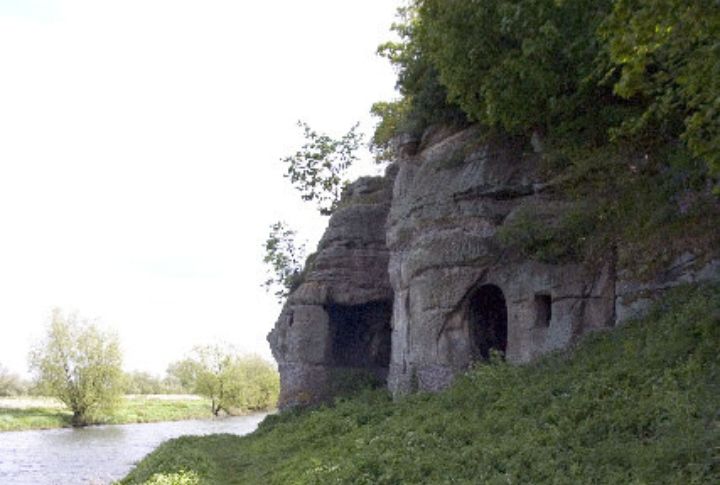
Anchor Church reflects resilience through its layered history. First serving as a sanctuary for a dethroned king, it later evolved into a Georgian-era retreat. Despite centuries of erosion, its structure remains intact, offering a rare window into Anglo-Saxon life and the endurance of historical landmarks in changing times.

